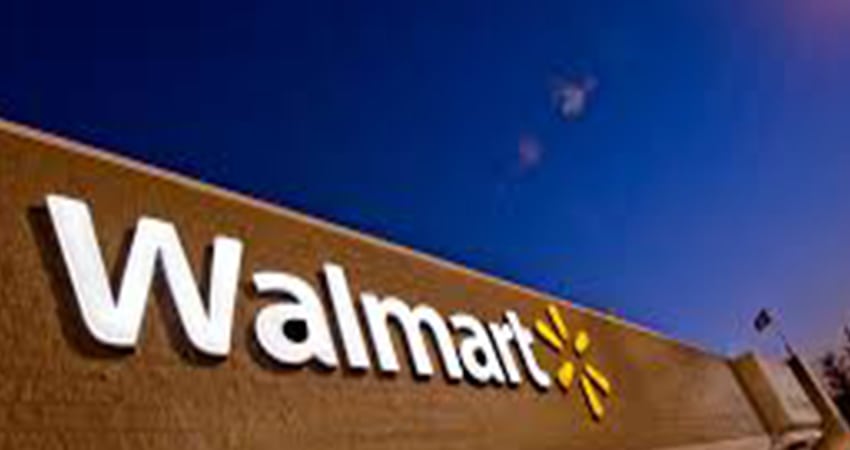Walmart is taking the bull by the horns in its efforts to compete with Amazon, with a slew of rapid changes spearheaded by its head of domestic ecommerce Marc Lore, founder and CEO of Jet.com., Walmart is on its way there.
Steve Weber, CEO of nChannel said that even though they have to take on Amazon, the initiatives they’re taking would happen regardless.
Weber said that part of this is also Walmart trying to reinvent itself by appealing to a broader array of shoppers, not just being known as a low-cost leader.
Walmart CEO Doug McMillon said in a fourth quarter earnings call that as customer expectations continue to change rapidly, they will expect even more personalization and convenience in their shopping experience.
“We’re moving quickly to respond to the current opportunities as well as to innovate and transform the shopping experience for our customers in the future,” said McMillon.
Walmart saw strong growth in the first quarter of 2018, but particularly in ecommerce, where sales grew 63%. The majority of the growth was organic through Walmart.com, executives said.
Brett Briggs, Executive Vice President and CFO of Walmart, said during the Q4 call that Walmart’s integrated offerings mean customers are shopping with them through multiple channels. During the 2016 holiday season, its store pick up program, Pickup Today grew 27% over the prior year.
The program will tap into Jet.com’s “smart cart” technology which delivers savings by offering customer discounts at the checkout.
Connecting Online and In-Store
One of the advantages Walmart has over Amazon is its 4,800 U.S. stores, including 3,500 super centers, hundreds of which are used to ship online orders. It also recently began offering discounts to customers that pick up online orders in store. On the physical store side for Amazon, its Amazon Go is a trial program where scanners replace checkout lines and shoppers are automatically billed to their Prime account.
During the February earnings call McMillon talked about innovations in super centers in Florida and Texas where customers can use scan-and-go touchscreens and have access items on Walmart.com and virtual item displays.
McMillon said that during Cyber Weekend 2016, more than 70% of traffic was driven to Walmart.com through mobile.
While ecommerce continues to grow rapidly, Walmart is continuing to innovate in its brick-and-mortar stores, including initiatives like ordering groceries online and and in-store pickup.
“Rapid advances in technology mean we need to become more of a digital enterprise, and that’s what we’re doing,” said McMillon.
“What this [evolution] is a sign of is Walmart’s recognition that the old playbook won’t work, so they’ve decided to develop a new one,” said Mark Vandegrift, Vice President of Product Management for ChannelAdvisor. “They need to adjust as the shopper evolution continues and possibly accelerates.”
The Acquisitions
In the past year Walmart went on a shopping spree, acquiring several ecommerce retailers in an effort to up its online game.
The big one was the August 2016 acquisition of Jet.com for $3.3 billion. This was followed by three acquisitions this year: Shoebuy.com (January, $70 million) Moosejaw (February, $51 million) and ModCloth (March 2017). Before it was acquired, Jet.com purchased Hayneedle in March 2016 for an undisclosed sum. Walmart is currently in talks to add another top ecommerce brand, Bonobos, to its stable.
After the Jet.com acquisition, Walmart made the savvy move of naming its founder Marc Lore as CEO of its domestic ecommerce business.
“The acquisitions of ShoeBuy and Moosejaw, in addition to Hayneedle gave us immediate expertise and capabilities in new, more upscale categories of merchandise,” said McMillon in the earnings call.
By having Lore on board, McMillion said, Walmart has set up teams to accelerate integration efforts and leverage its strengths. This has included optimizing two fulfillment networks, utilizing scale in areas like shipping, sharing assortments and leveraging the combined strengths of the marketing teams.
Vandegrift said Walmart is not only responding to the impact Amazon has had on the retail space, but also pursuing its own diversification strategy.
“Walmart is broadening their bases by developing a distribution platform that encompasses different product verticals and shopper demographics,” said Vandegrift. “This will allow them to work with more brands, reach new customers and collect more data about shopper behavior.”
He said Walmart still has a lot of work to do in terms of integrating its back-end processes to make it easier for brands to get their products in front of the right audience, but they seem dedicated to making the vision a reality.
Walmart’s acquisitions are not only part of a bold strategy challenging Amazon’s ecommerce dominance, but a move to target the highly coveted millennial demographic. Vandegrift said these are all brands one wouldn’t normally associate with Walmart and its low-price focus, giving it an opportunity to change consumer attitudes.
“Some of the acquisition targets have models that have developed in the age of the internet, which may appeal more strongly to millennials than the traditional shopping experience of Walmart stores,” he said.
Weber said Walmart is working to make sure they are an online destination with multiple entry points driving its growth.
“When you look at the Bonobos acquisition, that is attracting a specific type of buyer and demographic compared to Modcloth and Moosejaw,” said Weber. “Much like Netflix producing its own content, people will go to them for those sites, be attracted to those things and hopefully stick around.”
Weber said Walmart will be challenged to integrate its infrastructure and supply chain automation capabilities with all its new brand properties, adding it remains to be seen how everything will be tied together on the back end.
“How does Bonobos tie into Tide laundry detergent?” questioned Weber.
Eoin Comerford, CEO of Moosejaw Mountaineering said in February that the Walmart acquisition allows his company to retain its unique personality while leveraging the immense scale and buying power of Walmart. Moosejaw continues to operate its sites and stores as a standalone specialty retailer of premium outdoor brands in a complementary fashion..
“By some estimates, Amazon and Walmart accounted for almost 50% of U.S. ecommerce in 2016 with both committed to investing billions to fund additional growth,” said Comerford. “This is where the future of U.S. retail and ecommerce will be defined in the coming years, and Walmart’s acquisition of Moosejaw gives the specialty outdoor industry a seat at the table.”
McMillon said while the acquisitions have received a lot of attention, Walmart’s plan in ecommerce is not to buy its way to success. The majority of growth, he emphasized, is and will be organic.
“The acquisitions are helping us speed some things up,” said McMillon. “So overall, we’re making progress in providing the seamless shopping experience our customers’ desire and we will keep moving along this journey.”
Weber said while acquisition is the right approach, each brand now faces a challenge maintaining its customer experience and market perception under the umbrella of Walmart.
The Shipping Threshold
In February, Walmart eliminated its fee-based ShippingPass program, less than a year after it was created to go up against Amazon Prime, instead offering free two-day shipping on 2 million items at a $35 order threshold.
“As you might expect, we’ve seen a nice uptick in our ecommerce business since this launch,” said McMillon on the earnings call.
Walmart CFO Briggs said the company’s ecommerce fulfillment network performed very well throughout the holiday period, supporting record volumes with on-time delivery rates that exceeded the prior year.
“This network is also the backbone of the new free 2-day shipping promise with a $35 minimum order available at Walmart.com,” said Briggs. “Customers are responding well to this new offer, and ecommerce sales have strengthened since its launch on Jan. 31.”
A Strong Digital Presence Today
Whether you’re Walmart or any other major retailer, having a strong online presence is vital to winning new customers.
Weber said the hard part where most retailers tend to fall is in the execution of its digital presence.
He said often the ecommerce orders are wrong, and retailers depend on pickers rather than people who know how to shop to fulfill their orders.
“All of the big-box guys suffer from that inventory problem,” said Weber. “They have gotten very good at knowing what is available in one single store, but what they are not very good at yet is knowing what is across the chain.”
Weber said aside from a lack of inventory visibility, not knowing the customer is also a challenge for retailers trying to get away from the old way of shopping.
Weber said shoppers today expect to be remembered forever by retailers, including their full store and online purchase history. “It’s a customer service issue and a merchandising issue as well,” he said.
Vandegrift said there are still categories such as grocery where at least in the U.S. shopping behavior has shifted less than in other categories.
Vandegrift added that those categories that are best served by building a digital strategy for the present and future, in categories where behavior has already shifted to digital, retailers must have a cohesive plan and the ability to change direction quickly as a consumers are likely to do.
Vandegrift said Walmart’s challenge isn’t just about creating a strong digital presence but also about tapping the combined power and synergy of its online r and offline assets.
“With regard to Amazon, it’s about providing the same or better level of value and customer experience, which is challenging considering all of the benefits Amazon provides to Prime members,” said Vandegrift.

